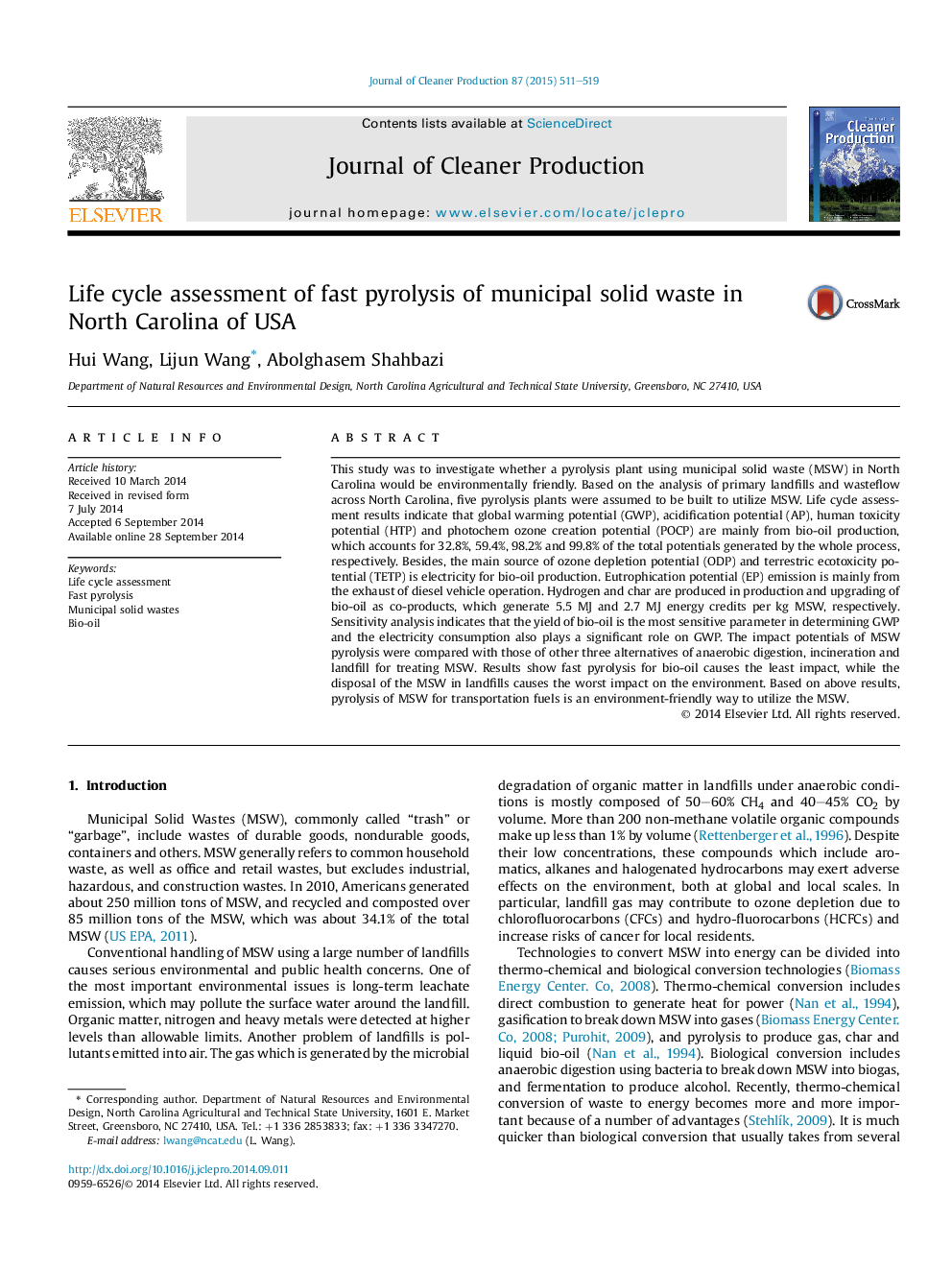| Article ID | Journal | Published Year | Pages | File Type |
|---|---|---|---|---|
| 8105241 | Journal of Cleaner Production | 2015 | 9 Pages |
Abstract
This study was to investigate whether a pyrolysis plant using municipal solid waste (MSW) in North Carolina would be environmentally friendly. Based on the analysis of primary landfills and wasteflow across North Carolina, five pyrolysis plants were assumed to be built to utilize MSW. Life cycle assessment results indicate that global warming potential (GWP), acidification potential (AP), human toxicity potential (HTP) and photochem ozone creation potential (POCP) are mainly from bio-oil production, which accounts for 32.8%, 59.4%, 98.2% and 99.8% of the total potentials generated by the whole process, respectively. Besides, the main source of ozone depletion potential (ODP) and terrestric ecotoxicity potential (TETP) is electricity for bio-oil production. Eutrophication potential (EP) emission is mainly from the exhaust of diesel vehicle operation. Hydrogen and char are produced in production and upgrading of bio-oil as co-products, which generate 5.5Â MJ and 2.7Â MJ energy credits per kg MSW, respectively. Sensitivity analysis indicates that the yield of bio-oil is the most sensitive parameter in determining GWP and the electricity consumption also plays a significant role on GWP. The impact potentials of MSW pyrolysis were compared with those of other three alternatives of anaerobic digestion, incineration and landfill for treating MSW. Results show fast pyrolysis for bio-oil causes the least impact, while the disposal of the MSW in landfills causes the worst impact on the environment. Based on above results, pyrolysis of MSW for transportation fuels is an environment-friendly way to utilize the MSW.
Related Topics
Physical Sciences and Engineering
Energy
Renewable Energy, Sustainability and the Environment
Authors
Hui Wang, Lijun Wang, Abolghasem Shahbazi,
